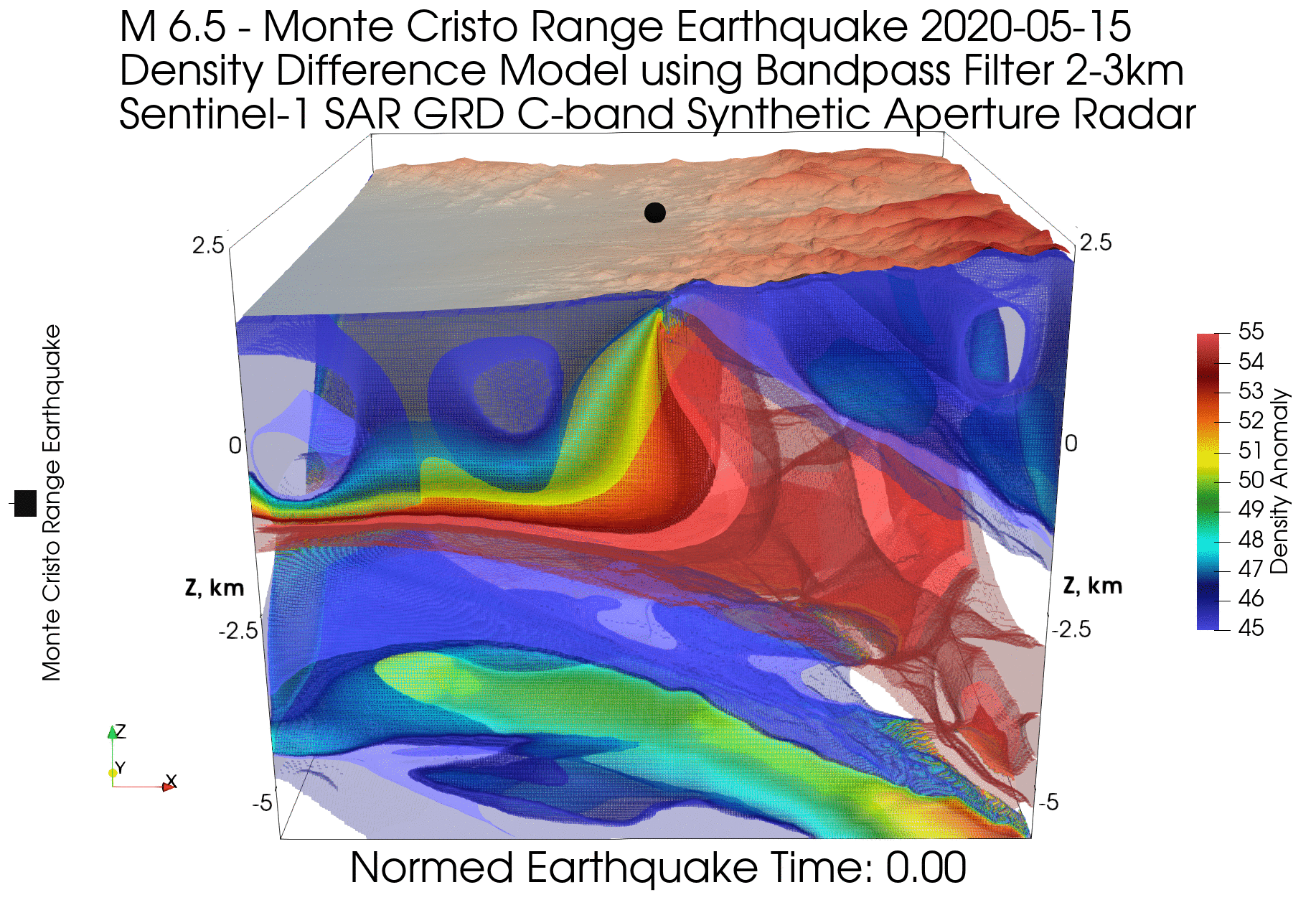We have already discussed modern methods in geology in the article Geology of the XXI century as a science of Earth data using the example of the earthquake model in the Monte Cristo massif in Nevada, USA on May 15, 2020 with a magnitude of 6.5. And everything would be fine in this model, but that's just the most interesting thing - the displacement of geological blocks and the "breathing of mountains" schematically indicated to us by an experienced geologist. Most importantly, modern computational geology (including geophysics, modeling and visualization) allows you to create a dynamic (4D) geological model and see the ongoing geological processes in reality.

, Density Anomaly,% , 2.8 .
, . , Open Source ParaView N-Cube ParaView plugin for 3D/4D GIS Data Visualization. ParaView:

, , . , ( ) , . , , ( ) , . , GitHub GIS Snippets Jupyter Python 3 ( ). GMTSAR.
, , , , ( ) . . , . , — , ( ) . , . , , ( ) . , , GMTSAR.
, , . , , TemporalInterpolator ParaView . , — . , , , . :

, , ("") . , . , , , . " ":

( , 20-30 ), — ( 15-20 ). :
, — 3D , , … , , .
In conclusion, I invite everyone to visit the GitHub repositories with a variety of geological models and their visualization in Blender and ParaView, as well as examples of spatial spectra analysis, synthesis of high-resolution gravity data based on remote sensing data and other calculations, including those performed on the geoid using PostgreSQL / PostGIS. Also see ready-made visualizations on the YouTube channel .